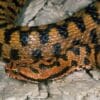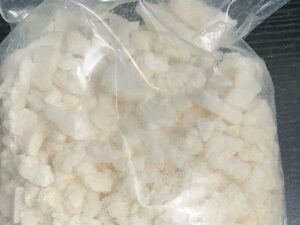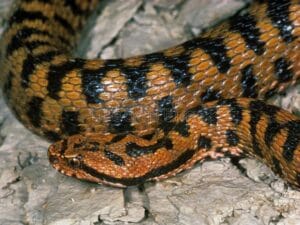Buy Vipera Aspis Snake Venom online Europe.The variation of venom composition with geography is an important aspect of intraspecific variability in the Vipera genus, although causes of this variability remain unclear. The diversity of snake venom is important both for our understanding of venomous snake evolution and for the preparation of relevant antivenoms to treat envenomations. A geographic intraspecific variation in snake venom composition was recently reported for Vipera aspis aspis venom in France. Since 1992, cases of human envenomation after Vipera aspis aspis bites in south-east France involving unexpected neurological signs were regularly reported. The presence of genes encoding PLA2 neurotoxins in the Vaa snake genome led us to investigate any neurological symptom associated with snake bites in other regions of France and in neighboring countries. In parallel, we used several approaches to characterize the venom PLA2composition of the snakes captured in the same areas. Buy Vipera aspis Venom OnlineVIPERA ASPIS VENOM ONLINE 1G
Methodology/Principal Findings
We conducted an epidemiological survey of snake bites in various regions of France. In parallel, we carried out the analysis of the genes and the transcripts encoding venom PLA2s. We used SELDI technology to study the diversity of PLA2 in various venom samples. Neurological signs (mainly cranial nerve disturbances) were reported after snake bites in three regions of France: Languedoc-Roussillon, Midi-Pyrénées and Provence-Alpes-Côte d’Azur. Genomes of Vipera aspis snakes from south-east France were shown to contain ammodytoxin isoforms never described in the genome of Vipera aspis from other French regions. Surprisingly, transcripts encoding venom neurotoxic PLA2s were found in snakes of Massif Central region. Accordingly, SELDI analysis of PLA2 venom composition confirmed the existence of population of neurotoxic Vipera aspis snakes in the west part of the Massif Central mountains.
Buy Vipera aspis Venom Online
Conclusions/SignificanceThe association of epidemiological studies to genetic, biochemical and immunochemical analyses of snake venoms allowed a good evaluation of the potential neurotoxicity of snake bites. A correlation was found between the expression of neurological symptoms in humans and the intensity of the cross-reaction of venoms with anti-ammodytoxin antibodies, which is correlated with the level of neurotoxin (vaspin and/or ammodytoxin) expression in the venom. The origin of the two recently identified neurotoxic snake populations is discussed according to venom PLA2 genome and transcriptome data.
Four species of vipers of the Vipera genus live in mainland France. Two of these species have not been implicated in causing serious envenomation. Indeed the Basque viper (Vipera seoanei) and the meadow viper (Vipera ursini) are small snakes that live within a restricted area and are not medically significant. The other two French viper species, i.e., the adder (Vipera berus) and the asp viper (Vipera aspis) are larger snakes, ranging from 40 to 60 cm in length, and can cause life-threatening envenomation. Since it is adapted to cold regions, Vipera berus can be found in Scandinavian countries beyond the Arctic polar circle. The northern half of France and the mountainous regions of central France mark the southernmost extension of the habitat of this species. This snake is common in Sweden and England. Vipera aspis, that requires sun and warm temperatures, is found mainly in the regions south of the Loire. It can proliferate in suitable environments. Pattern markings are highly variable, even within the same population. Our reporting of the data concerning Vipera aspis bites in Southeastern France over a 13-year period should provide clinicians with useful insights for the management of patients envenomed by native Vipera species, including those involving neurological toxicity.
Snake venoms are complex mixtures of biologically active proteins. They contain several enzymes and toxins that act in synergy to fulfill the two main functions of the venom that are subduing and digesting prey. Diversity of snake venom within species has repeatedly been described over the last twenty years. The variation of venom composition with geography is an important aspect of this intraspecific variability. Several species of medical importance belonging to Viperidae and Elapidae families produce different clinical symptoms across the geographical range of their distribution
The causes of this variability remain unclear. In some cases the validity of the definition of the species is necessary and the apparent intraspecies variation is really interspecies variation. Interspecies hybridization may be a major mechanism of diversification of the composition of snake venoms. Whatever the origin, the diversity of snake venom is important both for our understanding of venomous snake evolution and for the preparation of relevant antivenoms to treat envenomations
VIPERA ASPIS VENOM ONLINE 1G
Three species of venomous snakes are of medical importance in Europe: Vipera aspis, Vipera berus and Vipera ammodytes (Vam). The clinical features of Vipera aspis aspis (Vaa) and Vipera berus berus (Vbb) envenomations are mostly local, but can be associated with systemic signs (gastrointestinal and coagulation disorders, low blood pressure) in cases of severe envenomation.
2. Composition of Vipera aspis Venom and Circumstances Related to Envenomation
The venoms of Vipera aspis and Vipera berus present similar compositions [1]. Both contain kininogenase (hypotensive bradykinin-releasing enzyme), prothrombin-activating factors, proteases, and hyaluronidases. Neurotoxins of the phospholipase A2 type have been found in the venom of some populations of Vipera aspis, but never in the venom of Vipera berus








